The Different Types of Wallpaper for Every Room in Your Home
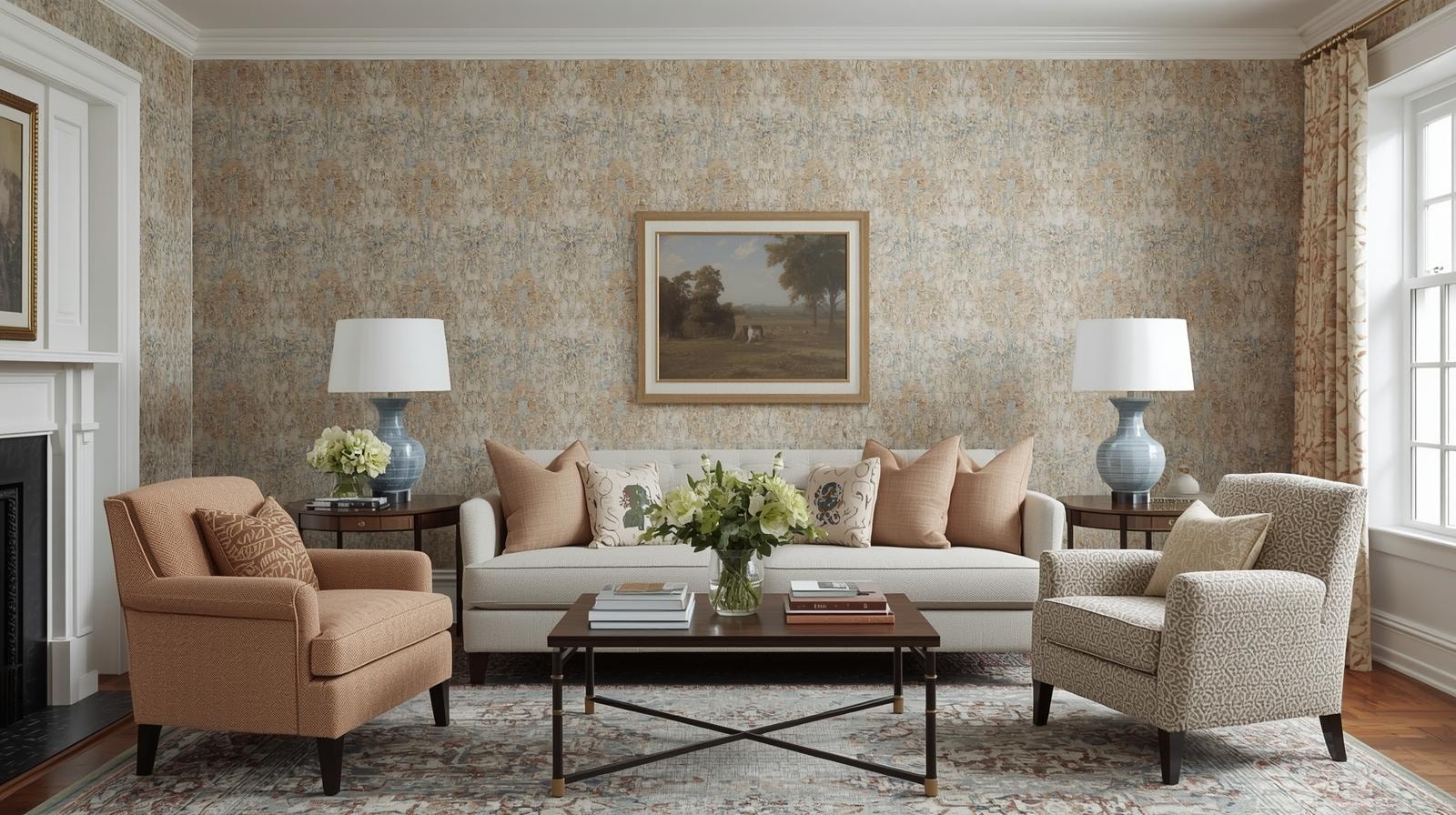
traditional wallpaper in a residential interior project
Vinyl wallpaper is best for kitchens and bathrooms due to its moisture resistance. Fabric and textile wallpapers suit bedrooms and living rooms for their texture and warmth. Grasscloth and natural fiber wallpapers work well in low-traffic areas like home offices. Peel-and-stick wallpaper is ideal for renters or temporary updates in any room. Foil wallpaper adds shine to accent walls. Flocked wallpaper provides texture for formal spaces like dining rooms. Use paper wallpaper in dry, low-traffic areas such as guest rooms or ceilings.
You want wallpaper that suits your room, your wall, and your lifestyle. Different types exist for different needs. Below you'll find clear descriptions, where to use them, and what to expect. This helps you pick the right wallpaper for your room.
Materials
Vinyl Wallpaper
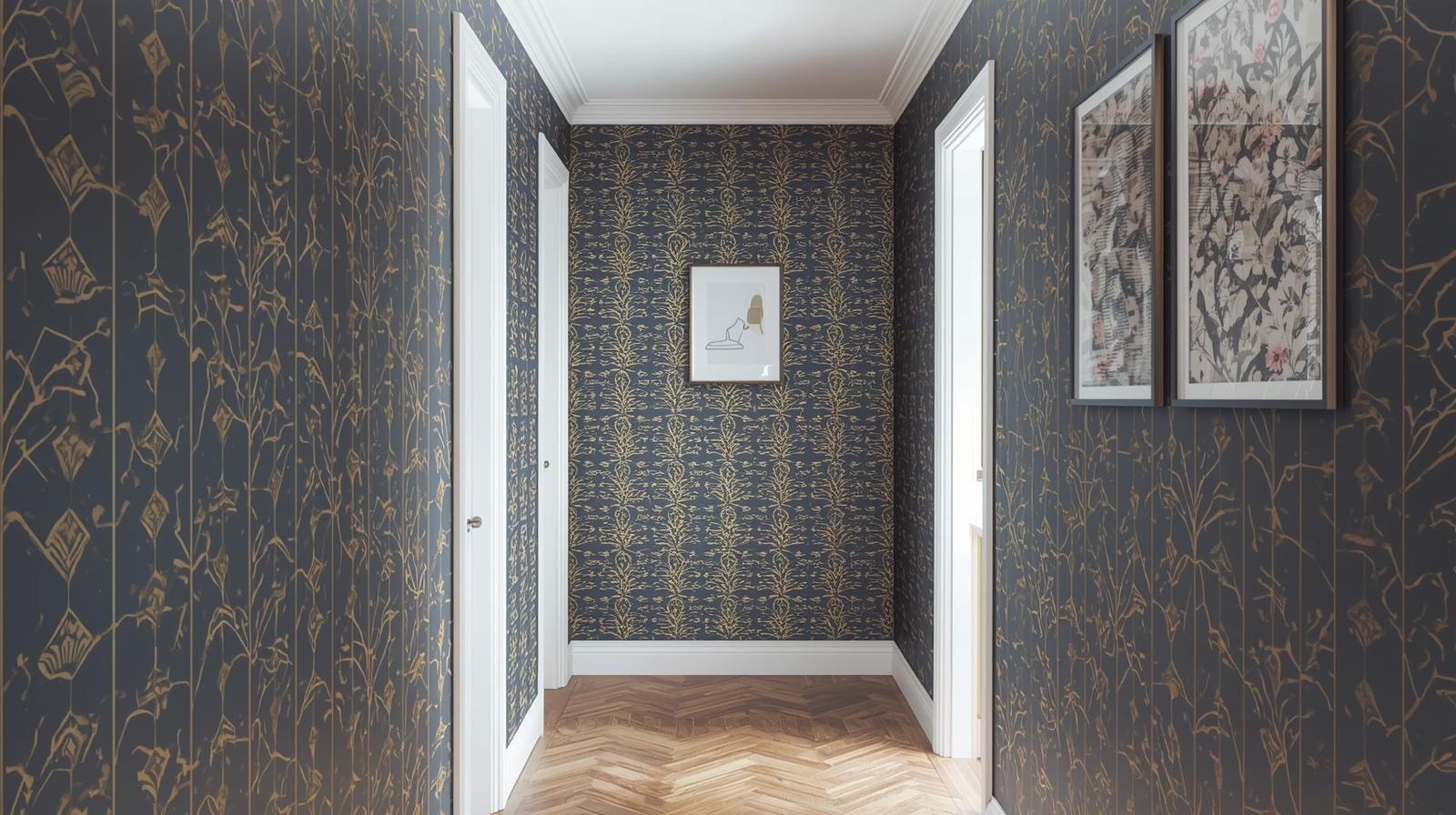
Vinyl wallpaper has a surface coating of PVC or vinyl. That coating repels moisture and resists stains. You often clean it with a damp sponge. Many variants meet class A fire rating requirements, which adds safety in multiuse or shared spaces. Vinyl is a popular choice for kitchens, bathrooms, hallways, and areas with heavy wear. In high traffic areas it holds up better than plain paper. The drawback: vinyl may trap wall moisture if walls are unvented. Always pair vinyl wallpaper with good ventilation or moisture control in damp rooms.
Grasscloth Wallpaper
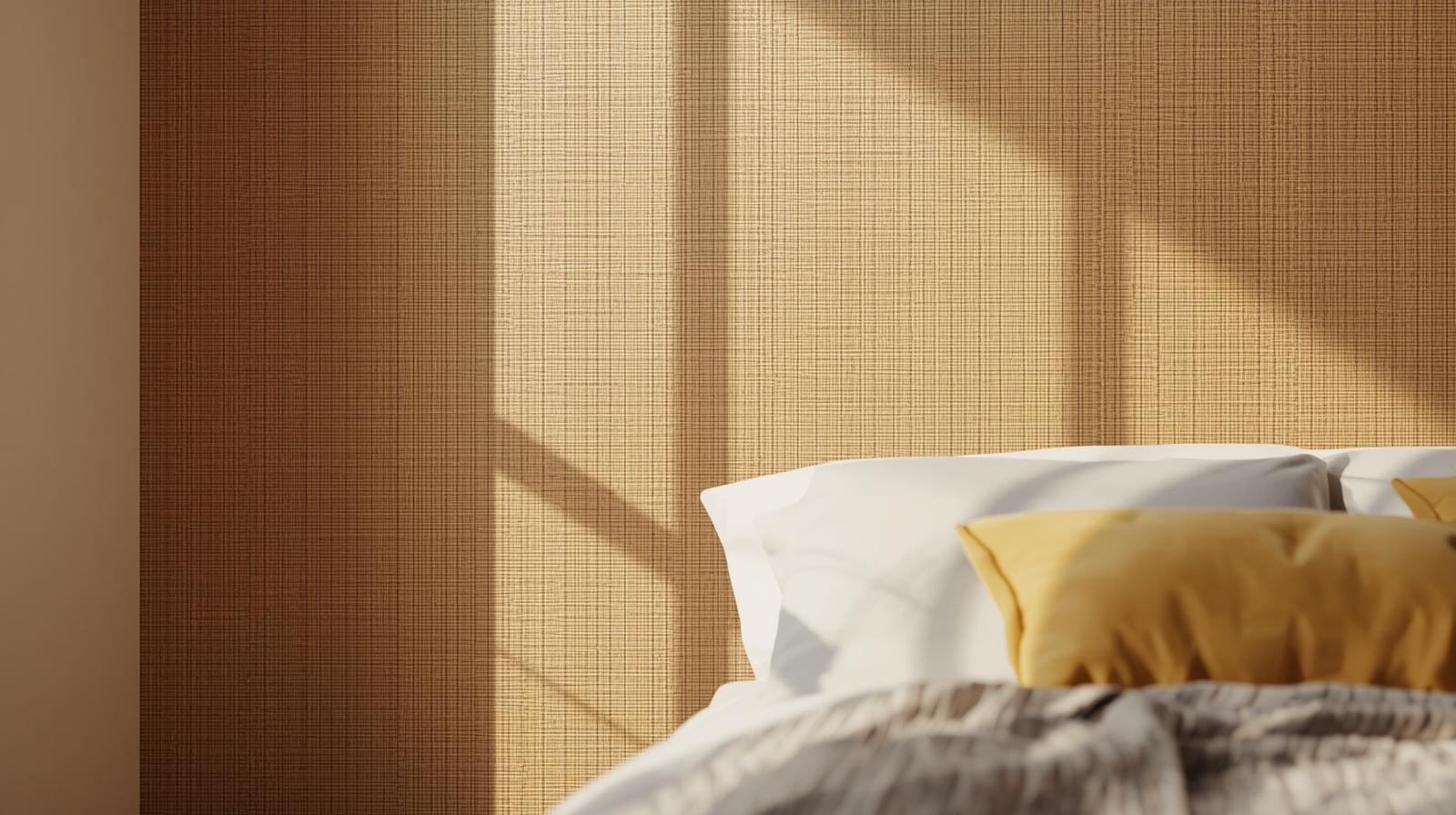
Grasscloth wallpaper brings natural elegance and texture to interior spaces. Handwoven from fibers like jute, sisal, arrowroot, and seagrass, it draws from traditional Asian weaving methods and offers subtle variation in every roll. Typically wider than standard wallpaper (around 36 inches), it doesn't match at the seams, which adds to its organic appeal. While beautiful, it's delicate since grasscloth stains easily, shows glue marks, and isn't washable. It's best installed with a starch-based adhesive using the paste-the-wall method. Ideal for bedrooms, home offices, and dining rooms, it's not suited for humid or high-traffic areas, but makes an exceptional choice for low-touch accent walls.
Flocked Wallpaper
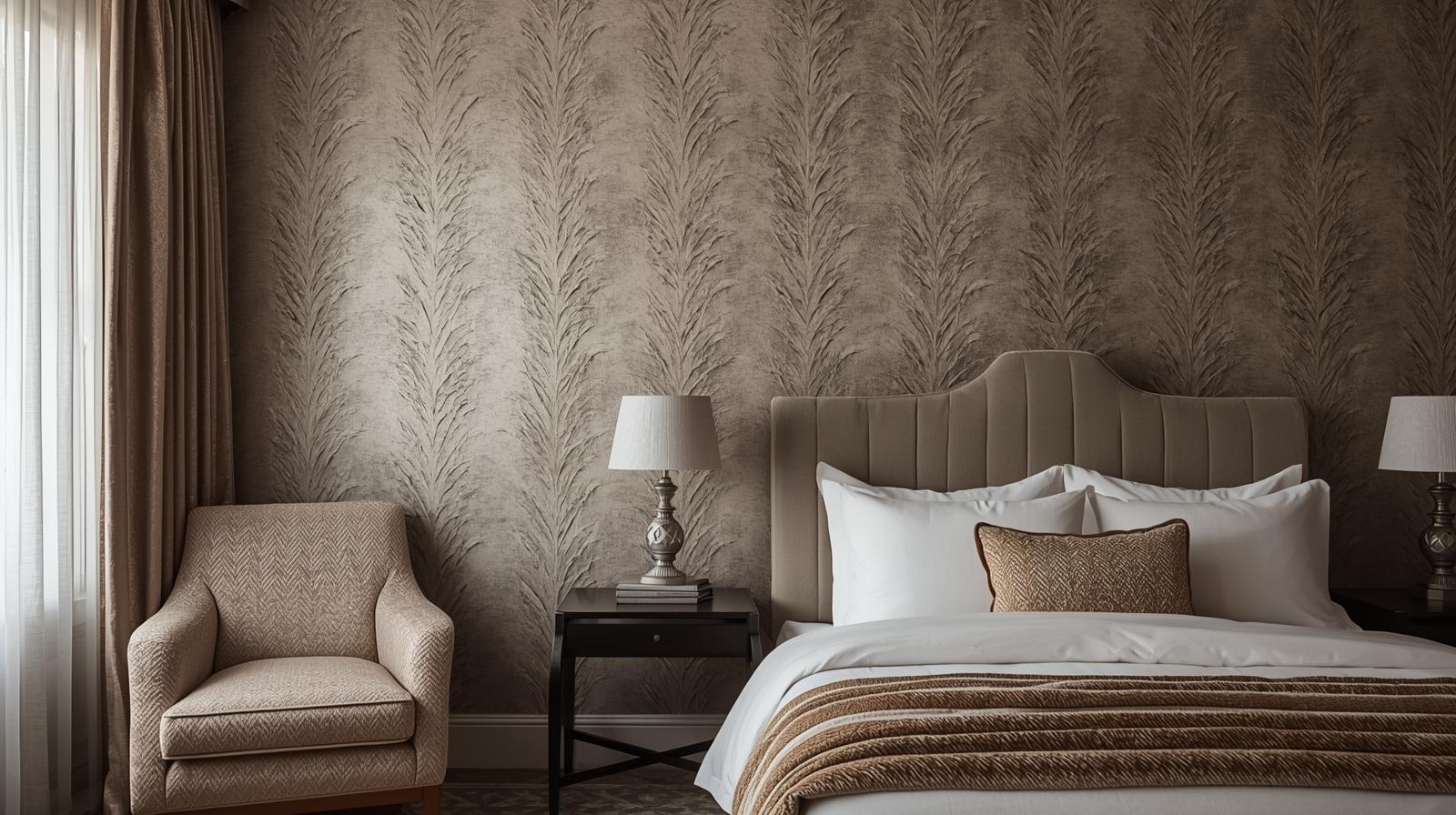
Flocked wallpaper has a velvety texture created by applying short textile fibers to an adhesive layer on a backing material, often paper or non woven. It delivers an opulent look perfect for dining rooms, formal parlors, or boutique hotel-style bedrooms. This wallpaper brings both visual and tactile depth, but it's highly sensitive to water and abrasive cleaning. It's best maintained with light dusting or vacuuming. Due to its delicate texture and difficulty in seam alignment, professional installation is often recommended. Never use flocked wallpaper in damp or high-traffic areas.
Peel and Stick Wallpaper / Removable Wallpaper
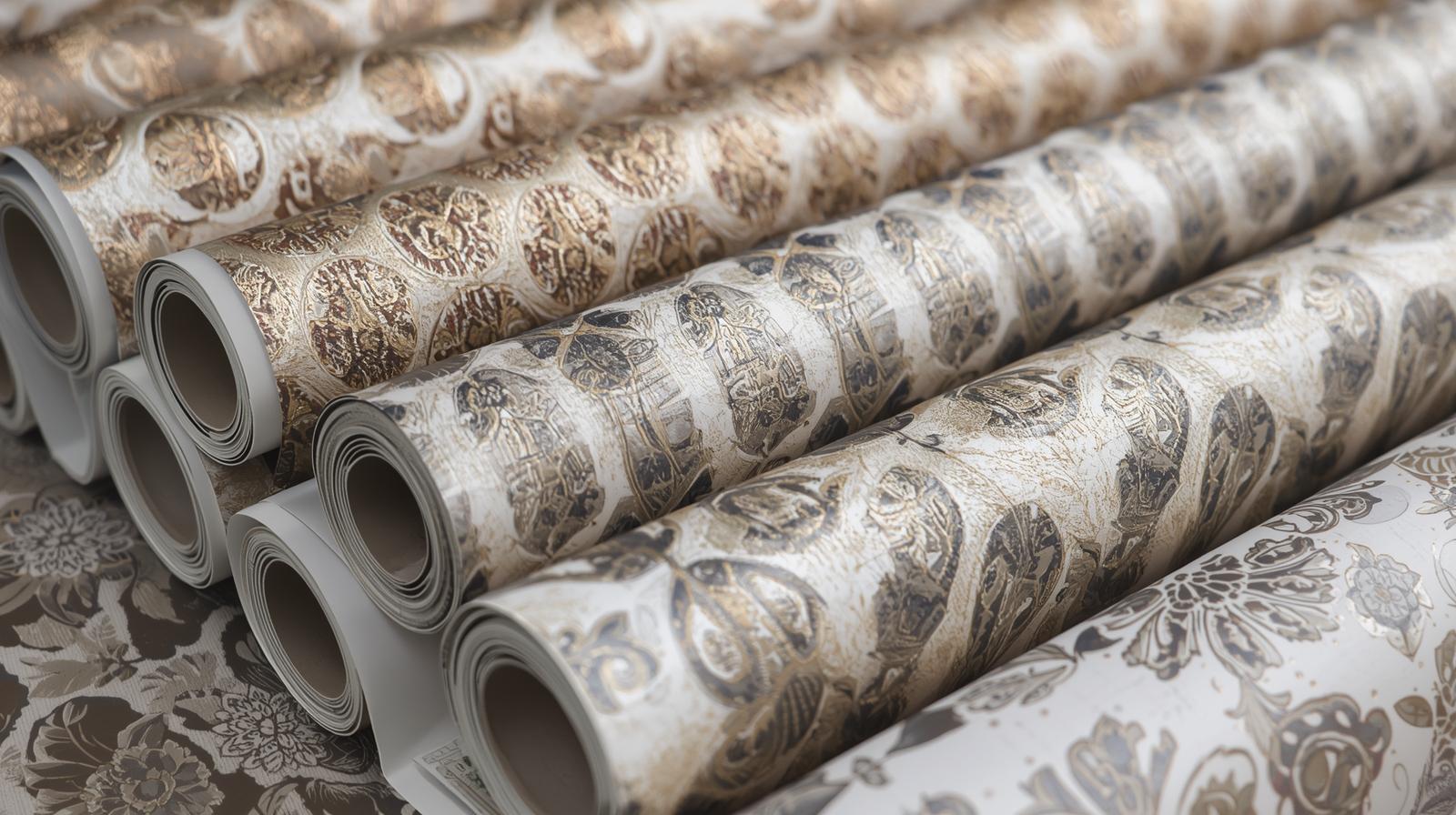
Peel and stick wallpaper comes with adhesive backing already applied. You peel off the release liner and press it directly to the wall. That method eliminates messy glue. Removable versions lift off without damage. That makes this type ideal for children's rooms, accent walls, rented spaces, or short‑term décor planning. Avoid putting it in bathrooms or kitchens unless the product is labeled moisture resistant or vinyl-based. Match wallpaper that is durable, with good adhesive strength, but easy to remove.
Non Woven Wallpaper
Non woven wallpaper mixes synthetic and natural fibers into a fabric‑like sheet. You apply adhesive to the wall instead of the wallpaper (paste the wall method). You hang it dry, smoothing out air bubbles. Removal is easier: you peel it off in strips without soaking. That ease appeals to DIY ers and renters. Use non-woven in most rooms: living rooms, bedrooms, hallways. Because it tears less when wet, it handles moderate dampness better than pure paper but is less robust than vinyl in wet zones.
Paper or Traditional Wallpaper
Traditional wallpaper comes unpasted. You spread adhesive or wallpaper paste onto its back, then press it onto the wall. You may shift it slightly while wet to align patterns. It offers broad style and print options. It is less forgiving with errors and demands patience during installation. It handles stable humidity better than damp zones. In a living room or dining room traditional wallpaper gives elegance. In humid rooms its edges may lift. Use a professional wallpaper installer if you want seamless joins and perfect alignment.
Application and Installation Types
Washable Wallpaper
Washable wallpapers allow you to wipe stains, splashes, or fingerprints away without damaging the print. Usually they're vinyl or vinyl coated. Use washable wallpaper in dining rooms, hallways, children's rooms, or any room that sees frequent dirt. If a wallpaper does not specify "washable" assume lighter cleaning only. Always test a small patch with a damp sponge before fully cleaning.
Paintable Wallpaper
Paintable wallpaper arrives blank or low print, usually textured or lightly embossed. After installation you paint it with your chosen color. It hides minor wall defects and gives you freedom to change color later. This type is often non woven or vinyl based. Use paintable wallpaper in rooms where you expect to repaint often, or when your walls aren't perfectly smooth. Avoid textured or heavy wallpaper if your wall surface is rough.
Pre Pasted Wallpaper
Pre-pasted wallpaper arrives with adhesive already applied on its back. You wet the backing and then apply it to the wall. This saves you the step of mixing or applying separate glue. It's a middle ground between traditional and peel and stick. Watch for instructions: soak time, adhesive thickness, and product limits. It works in many residential spaces except high moisture zones unless the paper is moisture resistant or vinyl.
Traditional / Paste the Paper
This classic installation method requires spreading wallpaper paste directly onto the back of the wallpaper, allowing it to soak (or "book") for a specified time, and then mounting it onto the wall. Commonly used for paper-based wallpapers, this technique provides good adhesion but demands speed and accuracy. Soaking times must be followed precisely to avoid over-expansion, which can lead to misalignment or curling at the seams. Suitable for traditional homes or detailed pattern work, it's best performed by experienced hands.
Paste the Wall
In this modern method, paste is rolled directly onto the wall, and dry wallpaper strips are applied over it. Most non woven wallpapers are designed for this technique. It eliminates soaking time and allows for easier repositioning, reducing the chance of tearing. This method also results in cleaner installation and is ideal for DIYers who want to minimize mess and speed up the process. It's commonly used in living spaces, hallways, and commercial applications for its efficiency.
Design Styles
Embossed / Metallic Wallpaper
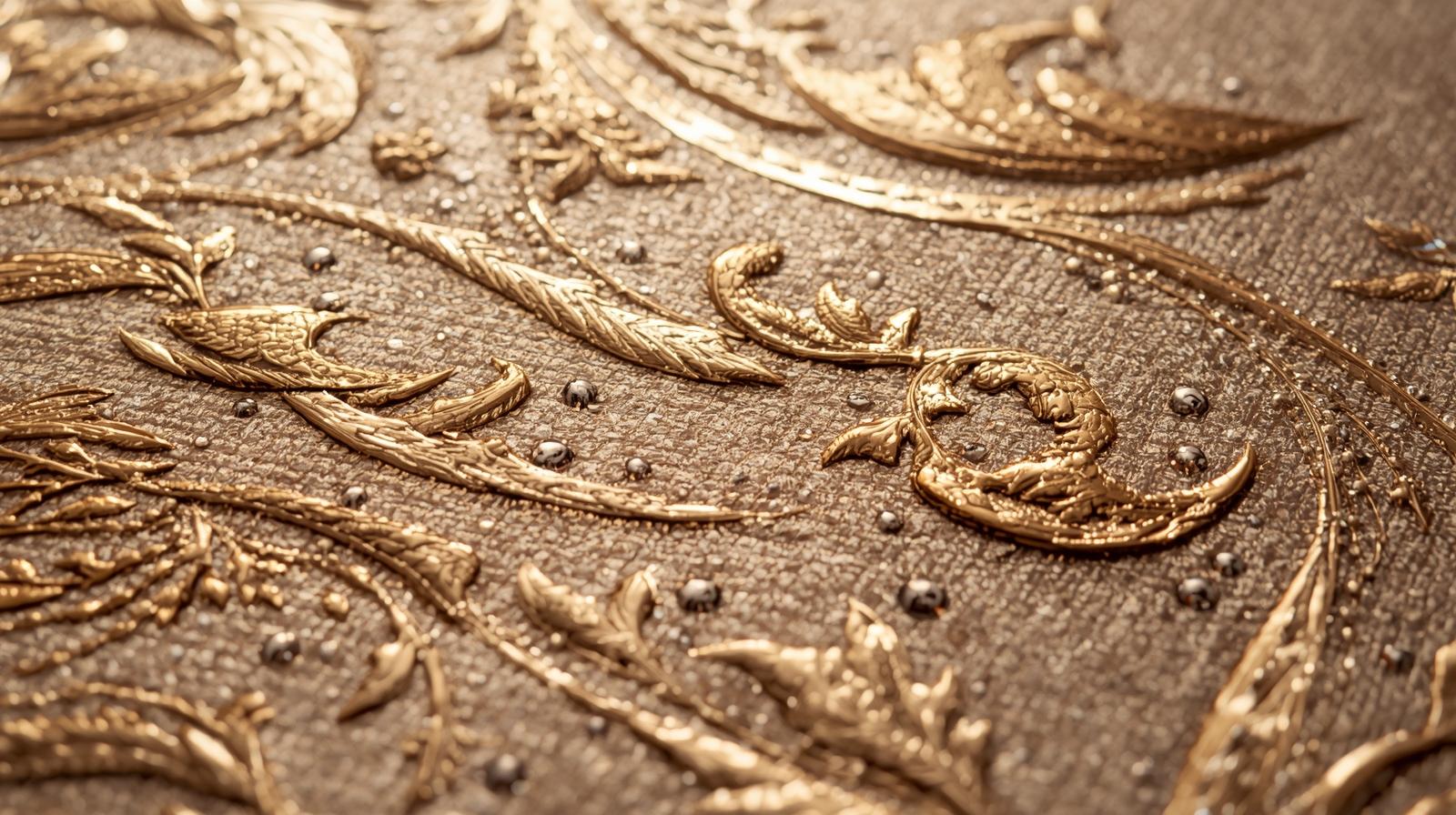
Metallic wallpapers carry foil or metallic inks. Embossed wallpapers have raised patterns or textures. These types bring visual interest and refined detail. Use them for accent walls, formal rooms, or feature areas. When installing these wallpapers, you must match patterns carefully. Cleaning must be gentle to avoid damaging metallic surfaces or raised areas.
Murals
Mural wallpapers depict full scenes across multiple panels like forests, skylines, or abstract art. These are ideal for feature walls in offices, bedrooms, or kids' playrooms. Installation must be accurate, as mismatched panels break the illusion. Most murals are non woven for easier handling.
Vintage or Retro Wallpaper
Drawing from historic patterns like damask, toile, or floral prints, these wallpapers fit well in restoration projects, Victorian homes, or stylized interiors. Choose non woven for modern durability or traditional paper for authenticity. Pattern matching is critical for these detailed prints.
Patterned Wallpaper (Small and Large Repeats)
Large-scale prints make bold statements but demand careful planning and alignment. Use in large rooms or on single accent walls. Small patterns are more forgiving and work well in tight spaces, bathrooms, or anywhere seams are more visible. Match the repeat size with the scale of the room for best results.
Moisture‑Resistant and Fire‑Rated Options
In areas with steam or humidity use moisture‑resistant or washable wallpapers. These resist loosened edges or staining. In multi‑unit buildings or high safety zones consider wallpaper with class A fire rating. That gives your wallcovering legal compliance for fire spread in many regions. Always check local building codes and product fire rating labels before installing in stairwells, hallways, or shared walls.
Thin vs Heavyweight Wallpapers
Thin wallpapers flex easily around corners, moldings, and minor wall imperfections. They demand more precision in lining up seams. Heavyweight wallpapers hide some wall flaws but need smoother surfaces and stronger adhesive. They tend to sag if the installation is poor. Match weight to your wall's condition and your installation skill.
Pattern Size: Big vs Small
Big patterns make bold style statements. They require careful alignment and waste more material at edges. In small rooms large prints may overwhelm the visual space. Small patterns hide imperfect seams or alignment errors. Use small repeat patterns in tight spaces or detailed areas; reserve big patterns for large, open rooms or feature walls.
The Different Types of Wallpaper Room‑by‑Room Guide
| Room | Requirements (Moisture, Traffic, Cleaning) | Recommended Types | Notes / Constraints |
|---|---|---|---|
| Bathroom / Powder Room | High humidity, water vapor, occasional splash | Solid vinyl (Class A, scrubbable), tile-look vinyl, moisture‑resistant peel & stick | Ensure full seam sealing; use exhaust ventilation |
| Kitchen / Laundry Room | Spatters, grease, frequent cleaning | Vinyl, vinyl‑coated, washable types | Use washable wallpaper; wipe with damp sponge, not soak |
| Entry / Hallway / High Traffic Zones | Abrasion, scuffs, impact | Heavy vinyl, fabric-backed vinyl, durable non woven | Choose substrates with strong tear resistance |
| Living / Family Room | Aesthetic, medium use | Grasscloth, textured non woven, mural, metallic | Avoid raw paper or uncoated surfaces—those degrade over time |
| Bedroom / Nursery | Moderate conditions, low moisture | Peel & stick, paintable non woven, vintage | Ensure materials are low-VOC and non-offgassing; breathable for air quality |
Installation Methods You'll Use
Paste the paper: apply glue to the back of wallpaper; hang each strip.
Paste the wall: roll glue onto wall; hang wallpaper sheet.
Direct to wall (self adhesive): peel back liner and press sheet onto wall.
Wet the backing (pre pasted): sponge or spray water onto the backside before mounting.
Best Practices for Installation
- Avoid working under direct bright light, which reveals flaws.
- Match pattern before cutting and trimming.
- Use a level or plumb line to start straight.
- Use a smoothing tool or plastic brush to press out air bubbles.
- Wipe off excess adhesive with a damp cloth quickly.
- Let seams dry before trimming edges.
- Work from top downward.
Costs and Labor
Wallpaper installation costs vary by material, labor, and room size. For materials, standard vinyl wallpaper averages between $0.75 and $1.70 per square foot, while non woven options fall in the $0.50 to $1.50 per square foot range. Premium selections like grasscloth or designer wallpaper can range from $2.50 up to $5.25 per square foot, or even higher for custom mural options. A single roll of mid-range wallpaper typically costs $30 to $50 and covers roughly 30 square feet. These pricing estimates are based on updated data from Homeguide and Fixr.
Labor costs for professional wallpaper installation are usually calculated per square foot, ranging from $4 to $10 including both labor and materials. Labor alone typically falls between $1 and $7 per square foot, depending on the complexity of the job and the condition of the walls. Some installers may also charge per roll, averaging $25 to $35 for hanging. On an hourly basis, labor rates range from $25 to $80. According to Angi, the average homeowner spends between $314 and $818 per room for installation services, with a national average around $428 to $490 as noted by Thumbtack.
Additional costs arise from wall preparation or wallpaper removal. Wallpaper removal ranges from $0.80 to $3.00 per square foot, depending on how many layers exist and the type of adhesive used. Wall repair, priming, and surface smoothing may add another $1 to $3 per square foot. Complex layouts, heavy wallpaper, and pattern matching can increase labor time and cost. Budgeting for these variables ensures you avoid unexpected charges when planning wallpaper projects.
How to Choose the Right Wallpaper for Your Home
Survey your rooms. Note moisture, light, traffic, wall condition. Choose wallpaper types that match your room's demands. Select installation methods you can manage. Consult a professional wallpaper installer when pattern matching, high walls, or room complexity requires precise installation. Read labels for fire rating, durability, and moisture resistance. Use this knowledge when buying wallpaper so you end up with wallcoverings that look good and last.
FAQs
1. What's the easiest wallpaper to install and remove?
Peel-and-stick wallpaper is easiest. No paste or tools are needed, and it removes cleanly.
2. Can wallpaper go in bathrooms?
Yes. Use vinyl or moisture-resistant wallpaper. Avoid paper or grasscloth types.
3. How do I clean wallpaper?
Vinyl can be wiped with a damp cloth. Fabric or flocked wallpapers should be dusted or vacuumed.
4. Is wallpaper better than paint?
Wallpaper offers more texture and design variety. Paint is faster and easier to change.
5. Can I use different wallpapers in the same room?
Yes. Use one main wallpaper and another for an accent wall to create balance.
About CooperBuild Team
CooperBuild's team brings extensive experience in interior finishes and material selection for residential and commercial projects across NYC.
Design & Construction Specialists
Subscribe to Our Newsletter
Get the latest insights, trends, and news from the construction industry delivered straight to your inbox.
We respect your privacy. Unsubscribe at any time.

